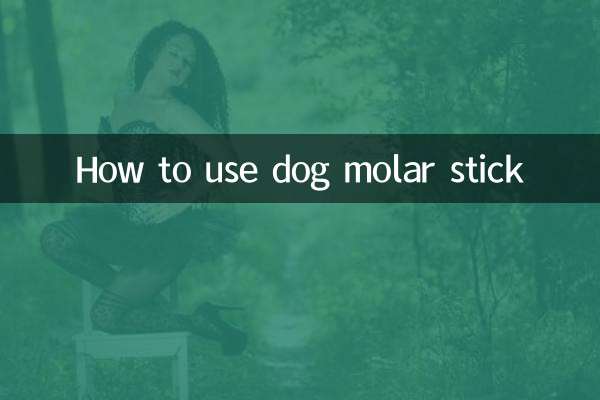How Dogs See Health: A Comprehensive Guide from Diet to Behavior
Dog health is one of every owner's top concerns. Knowing how to judge a dog’s health can help us detect potential problems in time and take appropriate measures. The following are the topics and structured data about dog health that have been hotly discussed on the Internet in the past 10 days for your reference.
1. Five key indicators of dog health

To determine whether your dog is healthy, you can start from the following five aspects:
| indicator | health performance | abnormal signal |
|---|---|---|
| Appetite | Eating regularly and being interested in food | Loss of appetite or overeating |
| mental state | Lively, active and responsive | Listless or unusually excited |
| Excretion status | The urine and feces are normal and the shape and color are not abnormal. | Diarrhea, constipation, or abnormal urine output |
| hairy skin | The hair is shiny and the skin is free of redness and swelling. | Hair loss, dandruff, or skin redness |
| weight | stay within standard range | Sudden weight loss or obesity |
2. Recently hotly discussed dog health topics
According to statistics from the entire Internet, hot discussions about dog health in the past 10 days have mainly focused on the following aspects:
| topic | Discussion popularity | main focus |
|---|---|---|
| Dog gastrointestinal health | high | How to treat gastrointestinal discomfort and the role of probiotics |
| joint care | Middle to high | Joint care and sports injury prevention for elderly dogs |
| skin problems | in | Seasonal dermatitis and allergen screening |
| dental health | in | Oral cleaning methods, dental calculus prevention |
| mental health | rise | Separation anxiety, stress response management |
3. Recommended Frequency of Dog Health Checkups
Regular health check-ups are an important measure to prevent disease. The following are recommended frequency of check-ups based on age and health status:
| age group | Health check frequency | Focus on projects |
|---|---|---|
| Puppies (0-1 years old) | 1 time per month | Vaccination, growth and development |
| Adult dogs (1-7 years old) | 1-2 times a year | Basic physical examination and dental examination |
| Senior dogs (over 7 years old) | Once every 3-6 months | Internal organ function, joint health |
| Chronically ill dogs | Follow doctor's advice | Related indicator monitoring |
4. Recent popular dog health diet trends
According to social platform data analysis, the following dietary patterns have received widespread attention recently:
| diet | heat change | Main advantages | Things to note |
|---|---|---|---|
| Fresh food feeding | up 35% | Fresh ingredients, controllable nutrition | Need to balance nutrition ratio |
| Freeze-dried food | up 28% | Retain nutrients and facilitate storage | Pay attention to the rehydration ratio |
| homemade dog food | up 15% | No additives, personalized | Need professional nutrition guidance |
| functional snacks | up 42% | Targeted nutritional supplements | Pay attention to palatability and dosage |
5. How to carry out basic health monitoring at home
Owners can do the following basic checks on their dogs regularly at home:
| Check items | normal range | Check method |
|---|---|---|
| body temperature | 38-39℃ | Rectal thermometer measurement |
| heart rate | 70-120 times/min (higher for small dogs) | Femoral artery counting |
| respiratory rate | 10-30 times/minute | Observe the rise and fall of the chest |
| gum color | pink | open lips and check |
| Hydration status | Skin rebounds quickly | Gently lift the neck skin to observe the rebound |
6. Recently hot-searched dog health problems and solutions
The following are the health issues and professional advice most searched by netizens recently:
| question | search volume | Professional advice |
|---|---|---|
| What to do if your dog vomits | high | Observe the frequency and contents of vomiting. Seek medical attention if you vomit multiple times within 24 hours. |
| How to deal with diarrhea in dogs | high | Fast for a short period of time and replenish fluids. If it lasts more than 24 hours, seek medical advice. |
| Dog doesn’t like to eat | Middle to high | Check the freshness of food and eliminate environmental stress. If you continue to refuse to eat, check |
| Dog scratches frequently | in | Check skin condition for fleas or allergens |
| Dog suddenly limp | rise | Check the foot pads for foreign objects. If there is no obvious trauma, take a radiograph for examination. |
Through regular observation and scientific maintenance, we can help our dogs maintain good health. When abnormalities are found, it is recommended to consult a professional veterinarian in time and never self-medicate. Remember, prevention is better than cure. Establishing healthy living habits and a regular physical examination system is the best care for your dog.

check the details

check the details